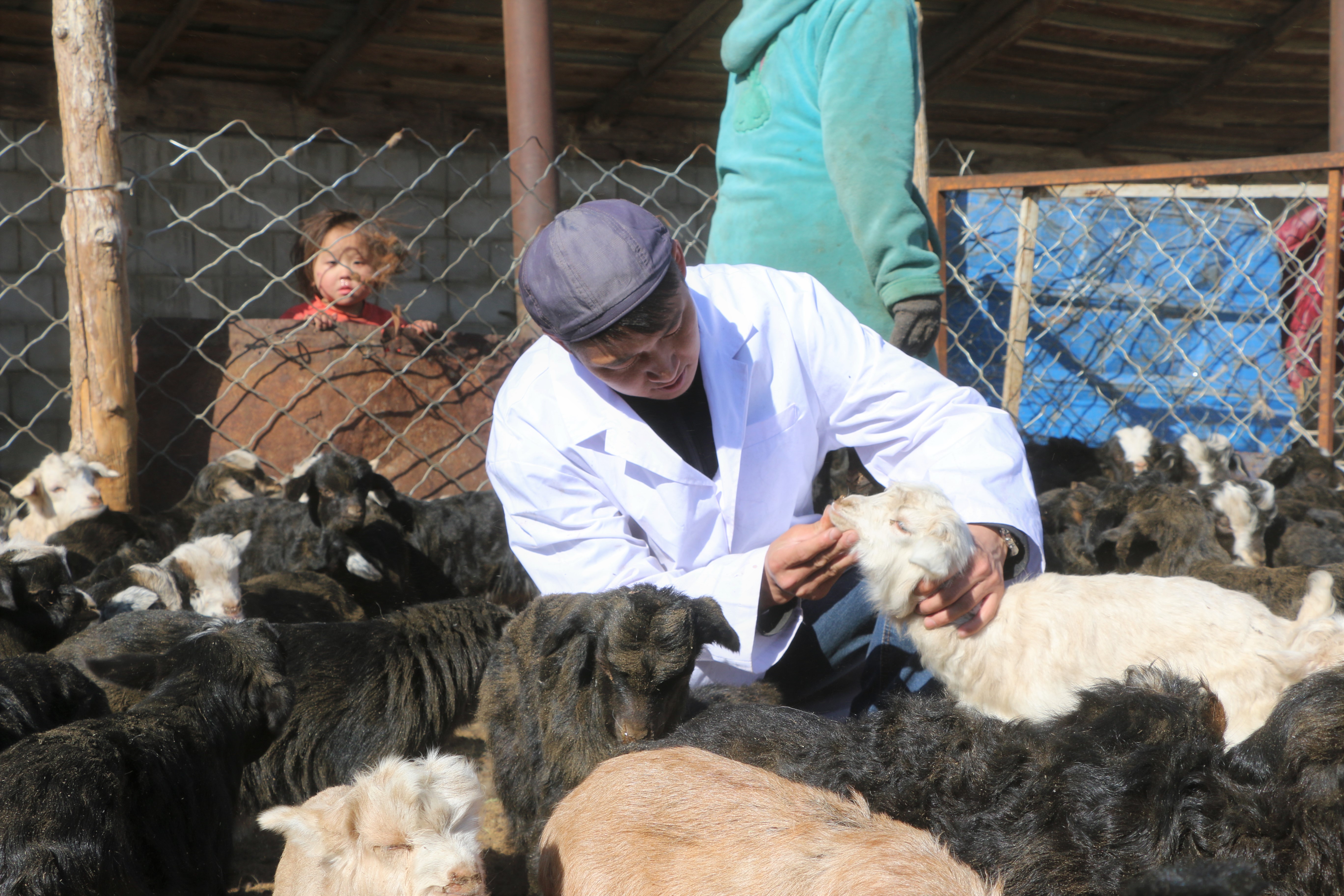The growing concern over the spread of Peste des Petits Ruminants (PPR) virus in China and Mongolia, alongside the genetic similarity of circulating virus strains in Central Asia, prompted the organisation of the first transregional meeting dedicated to harmonising PPR eradication efforts across neighbouring countries. This PPR Episystem workshop convened Delegates and representatives from China, Mongolia, Kazakhstan, Kyrgyzstan, Tajikistan, Uzbekistan, Georgia, and Russia.
Background
The PPR Global Control and Eradication Strategy (PPR GCES), launched in 2015 under the Global Framework for the Progressive Control of Transboundary Animal Diseases (GF-TADs), provides the international roadmap for combating the disease. Its implementation is guided by the PPR Global Eradication Programme (PPR GEP), which entered its second phase with the launch of the PPR GEP Blueprint in November 2022.
A key recommendation of the PPR GEP Blueprint is to adopt the PPR Episystem approach. This integrated, ecosystem-level perspective supports the design and implementation of eradication strategies, national plans, and monitoring systems.
Given the different PPR statuses of the participating countries, where only Russia is officially recognised as free from PPR, while its neighbouring countries continue vaccinating, the Episystem approach is seen as the most suitable and sustainable method for coordinated control.
This approach requires understanding and addressing a range of epidemiological, biological, environmental, economic, social, and anthropogenic factors that influence the persistence and transmission of the virus. The episystem is inherently dynamic, demanding adaptive strategies based on real-time data, regional cooperation, and scientific evidence.
During the workshop, countries shared their respective national PPR situations. It became clear that strategies vary significantly, ranging from types of vaccines used and the structure of vaccination campaigns to surveillance and monitoring methods. One of the prominent topics was the role of wildlife in the transmission of PPR, which remains a shared concern but is addressed differently across countries.
These differences present a challenge to fully align national strategies into a consistent Episystem approach. Nevertheless, participants acknowledged that a harmonised approach would enhance regional control and eventual eradication.
The workshop also highlighted that high-level political support is essential to establish and operationalise harmonised cross-border activities in a functional Episystem. Commitment at both technical and decision-making levels is necessary for joint planning, resource mobilisation, and the implementation of cross-border activities.
Experts and members of the Global PPR Secretariat presented the global status of PPR and scientific data relevant to the episystem approach. Experiences from other regions, such as West Africa and the Horn of Africa, where episystem principles have been piloted, were shared as case studies to inform and inspire adaptation in Central Asia and neighbouring countries.
The event significantly raised awareness among participants regarding the PPR Episystem approach, its guiding principles, and the benefits of a coordinated effort. Practical guidelines and tools were discussed to support national teams in aligning with the global eradication agenda.
Workshop objectives, PPR Secretariat, FAO
Status of PPR GEP implementation & analysis of pre-meeting survey results, WOAH
PPR activities in Asia and the Pacific and West Eurasia, WOAH
Overview of the PPR activities by FAO in the regions of Central Asia and China, and Mongolia, FAO
Understanding PPR Episystems & Episystem Guidelines on Surveillance and Vaccinations, Jeffrey C. Mariner
PPR Episystems Vaccination Guideline, Jeffrey C. Mariner
Examples of PPR Episystems: North Africa and China-Mongolia-Central Asia, FAO
Role of livestock mobility, husbandry, and identification systems in disease spread. How it informs the definition of episystems, Andrea Apolloni, CIRAD
Role of Wildlife in the PPR: Episystem approach to eradication, Amanda Fine, WCS
Surveillance approaches and episystem characterization, FAO
PPR Diagnostics: The Role of PPR Reference Laboratories in support of eradication through the episystem approach, Zhiliang Wang, China Animal Health and Epidemiology Center
Role of molecular epidemiology in identifying episystems, Arnaud Bataille, CIRAD
PPR differential diagnosis, FAO
Cross-border harmonisation of PPR eradication activities and information sharing, FAO
Example of MoU to assist in cross-border harmonisation for Episystems, WOAH
Assessment of Episystems, Jeffrey C. Mariner
Episystem approach: implication on PPR RAG roles and responsibilities, WOAH
PMAT milestones in the development of new tools, WOAH
Kazakhstan, Kyrgyzstan, Russia, Tajikistan, Uzbekistan (in Russian)
